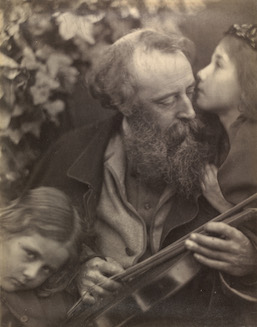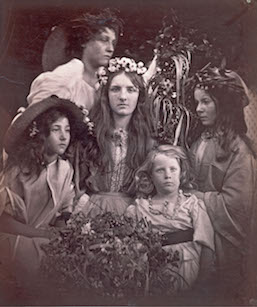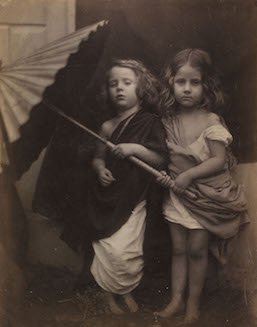Julia Margaret Cameron: A Woman Who Breathed Life Into Photographs

The artistry of imperfection defines the tone of the Julia Margaret Cameron exhibition at Mitsubishi Ichigokan Museum in Marunouchi through September 19th. A photographic pioneer, Cameron captured famous artists and writers such as Tennyson and Darwin and recreated scenes from religion, literature, and renaissance art. Cameron’s struggles as a creator also reflect conflicts that still exist among photographers today: What is the purpose of photography? Where is the line between creating art and truthfully recording the world?
Cameron’s work was groundbreaking because of her decision to produce photographs communicating emotions and ideas rather than technically precise representations of reality. Cameron’s photography clearly has her own aesthetic – close-ups with soft focus and the inclusion of errors such as fingerprints, smudges, light-leaks, and cracks in glass negatives. She embraced the aesthetic of the imperfect or broken, creating a hand-made look. As one section of the current exhibition demonstrates, these “errors” were not mere laziness passed off as art – she did not accept each and every mistake, but selected them with careful consideration of their roles in enhancing the image.
In today’s world of photography obsessed with mega-pixels and sensor details, smaller more and ubiquitous cameras, and programs with editing presets, it is easier than ever to take a photo and manipulate it. Meanwhile, video and diagrams at the Cameron exhibition remind us just how hard creating an image used to be. Cameron practiced colloidal photography, a difficult process in which one could easily botch up the image at any stage of the convoluted journey between pushing the shutter and getting a print. Negatives were made on glass plates that needed to be as large as the desired print. Many photographers of the time made the ultimate sacrifice for their art, poisoned by the chemicals necessary at that time.


Is photography art? Cameron’s contemporaries complained that photographs were supposed to be a “truthful medium” and record the world, not express creativity. For Cameron, it was the intention that makes it art or not, and while today many would differentiate between photojournalism and art photography, there are still those who intentionally blur this line. Photojournalist Narciso Contreras faced intense criticism for making a “better” image by editing out a small, unwanted camera from one image. National Geographic photographer Steve McCurry is criticized for going beyond standard journalistic editing techniques of lightening or darkening, opting to remove large physical elements or making substantial adjustments in color. McCurry even offers up his pieces as wall art. This exhibition gets to the heart of this never-ending debate. It is not only a great chance to get to know an iconic photographer, but also to think about the nature of photography – it’s purpose and progress.
Lori Ono
Lori Ono



